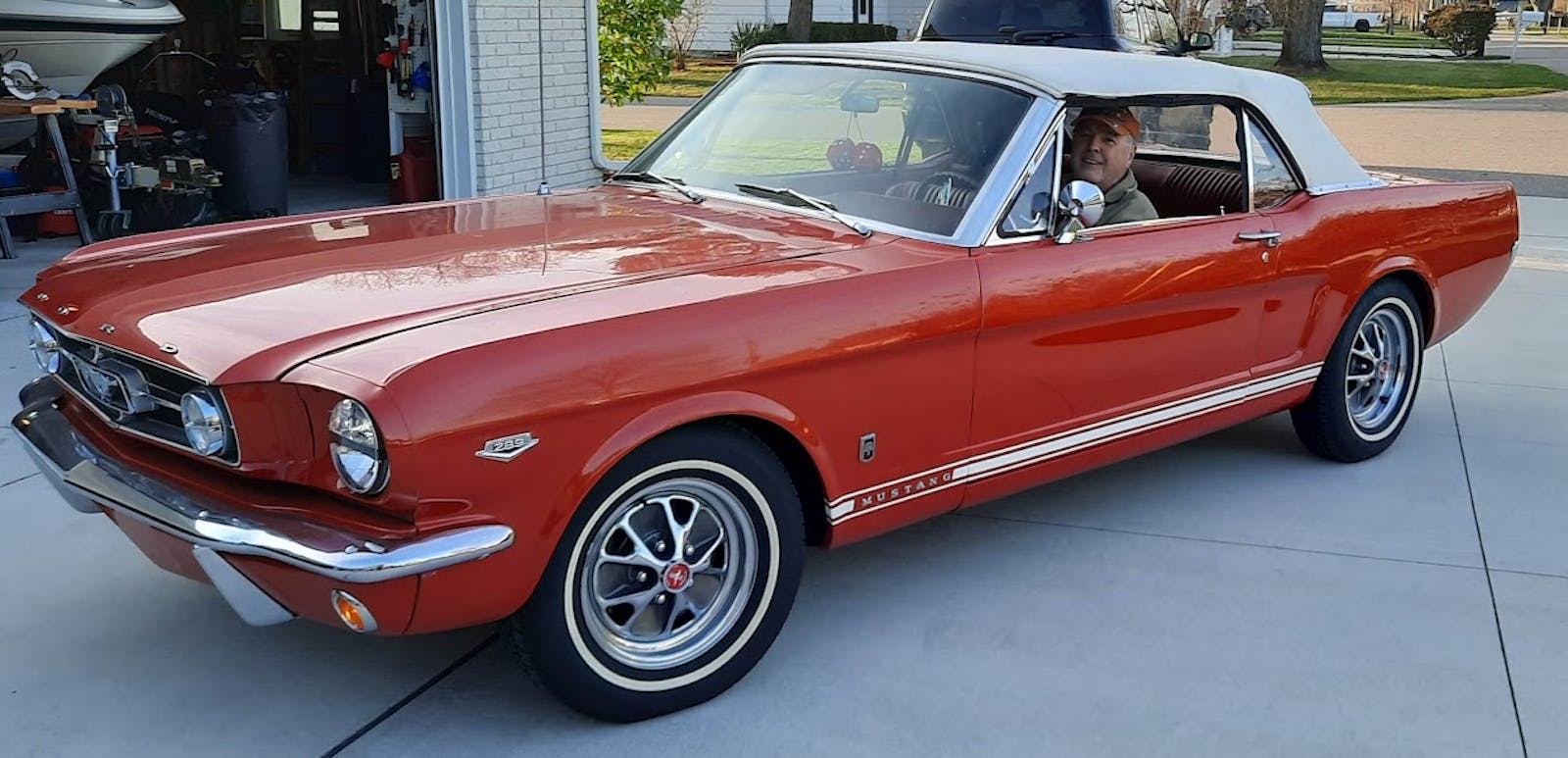Is this quirky 1967 Toyota Sports 800 project really worth $40K?
Two years before James Bond made the Toyota 2000GT famous, Toyota produced an Oddjob-sized sports car called the Sports 800. Beginning production in 1965, the Sports 800 was Toyota’s first dedicated sports car and was nicknamed the “Yota-Hachi,” which means “Toyota 8” in Japanese short form.
The Sports 800 was based on the 1962 Publica Sports prototype, which featured a fighter-jet-style one-piece sliding canopy in lieu of conventional doors. Keeping with the fighter jet theme, WWII aircraft designer Tatsuo Hasegawa and his partner Shozo Sato (on loan from Datsun) designed the Sports 800 utilizing aerospace engineering principles to reduce weight and improve aerodynamics. To save weight, thin-gauged steel was used for the unibody while the hood, trunk lid, roof panel, and even the seat frames were made from aluminum—a material that was mostly used in aerospace at the time.
The Sports 800 is considered the little brother of the 2000GT, and for good reason. It weighs only 1279 pounds—about half the 2000GT—and has a 13-inch-shorter wheelbase. The 790-cc air-cooled, dual-carbureted, boxer-twin engine produced 44 horsepower when new—enough to get the micro car to almost 100 mph while still maintaining an advertised fuel economy of 73 mpg. Unlike the one-off 2000GT roadster in You Only Live Twice, the Sports 800 came with a removable roof from the factory. Actually, it’s one of the earliest Targa-style roofs on a mass-produced car, predated only by the 1961 Triumph TR4 “Surrey Top.” The roof can be conveniently stored in the trunk.
Little car, big money

So if the Sports 800 is small and slow, why did a non-running project just sell for $40,000 on Bring a Trailer?
For one, the Yota-Hachi is rare. In the five years of total production, only 3131 Sports 800s were built. That’s not an extremely small production run compared to many other classics, but due to the thin steel used for the unibody, most Sports 800s were rusted to pieces. Also, limited parts availability caused many engines to be pulled and discarded. It’s estimated that only 10 percent of the original cars have survived, so they are currently about as rare as the 2000GT (production run of 351 units).
The Sports 800 was only sold in Japan, so the vast majority are right-hand drive. Fewer than 300 left-hand drive cars were ever made. A little more than 40 of these were shipped to U.S. dealers for “test marketing,” while the rest were sold in American-occupied Okinawa, Japan, where cars were driven on the right side of the road. The American dealerships decided that the Sports 800 wouldn’t sell well in the U.S., so no more were imported, but Toyota let the dealers keep the cars instead of shipping them back to Japan. The Yota-Hachi featured here is most likely one of the dealer cars, because its speedometer is in mph (Okinawa cars maintained metric gauges from factory). Keeping with the same 10-percent survival rate for the Sports 800, there are probably only about 30 left-hand drive cars currently in existence. That makes the car that just sold on Bring a Trailer even more scarce.
Fully intact, and a rich history
20191106214507)
If you still think 40 grand is berserk, consider that this car is believed to have been purchased new by Burl Ives. Yes, Frosty the Snowman Burl Ives. Can you imagine a six-foot-tall, 270-pound singing snowman driving this car? Apparently, they were surprisingly roomy, but if your height begins with a 6, you should try sitting in one before you buy it.
One of the major issues with restoring these cars is sourcing parts, an issue has been brought to light multiple times throughout the car’s history. Included with the sale is a 1968 letter from Toyota Motor Sales to Ives explaining that most parts for the Sports 800 were unavailable because it was never sold in the States. Also included is a 1976 letter to another owner listing unavailable parts, which included even common things like oil filters, windshield wiper blades, and spark plugs. This was just the start of owners having difficulty sourcing parts—a tradition that will continue for any restoration effort.

Even though this Yota-Hachi isn’t running and looks terrible at first glance, it’s a complete car, which really helps its value. The doors, hood, roof, and trunk lid all move and fit correctly. The only parts that seem to be missing are the last few feet of the exhaust and the passenger-side mirror. Almost all metal trim pieces and emblems are included, which can be a pain to source. The driver-operated grille shutters, which allow the engine to warm up quicker in colder weather, are still intact. The body is in good condition with minimal rust. The driver-side front fender needs work but isn’t major. The powertrain is in tact, and the engine reportedly ran in 2015. The 1967 model year was the first with a synchro first gear, making this car more manageable for city driving.
To make this Sports 800 even more attractive to bidders, it’s already in the United States and comes with a clean Texas title. That removes the initial headache you usually encounter when buying a rare Japanese import.
Was this a good buy?

Hagerty Price Guide values for Japanese Classics (defined as pre-1974 model year) have increased an average of 3.2 percent over the last three years to a #2-condition (excellent) value of $64,950. The largest increase in values is for Datsun 510 sedans (+31 percent and a #2 value of $16,900) and the Datsun 240Z (+12 percent and a #2 value of $38,700). More expensive Japanese Classics like the Toyota 2000GT and Mazda Cosmo have seen a significant drop in value (-26 percent and -37 percent, respectively). The Toyota Sports 800 will likely continue to rise in value with the other affordable Japanese Classics.
A fully restored LHD Sports 800 Okinawa is currently for sale in Switzerland for $89,000. Paying to ship this car to the U.S. and getting it registered will move the total closer to $100,000. At $40,000 for the project car, the new owner theoretically has a $60,000 budget before slipping underwater. It may be tough to make a profit restoring this car, if that’s the goal, but either way the Sports 800 will remain an extremely rare and important piece of automotive history.

20191106214449)












I have a 1967 Toyota Sports 800 that has been totally disassembled along with a second engine that was purchased on Guam so it is one of the 300 “American” versions. Is it really worth almost 40K?
No it’s not. Rarity doesn’t mean desirability, especially one that looks like the above. I love anything like this, but $100k spent on one in this condition?